Feature
The 10 fastest high-speed trains in the world
From the Shinkansen to the TGV, high-speed rail has continued to advance since its inception. But what is the fastest high-speed train? Peter Nilson finds out.
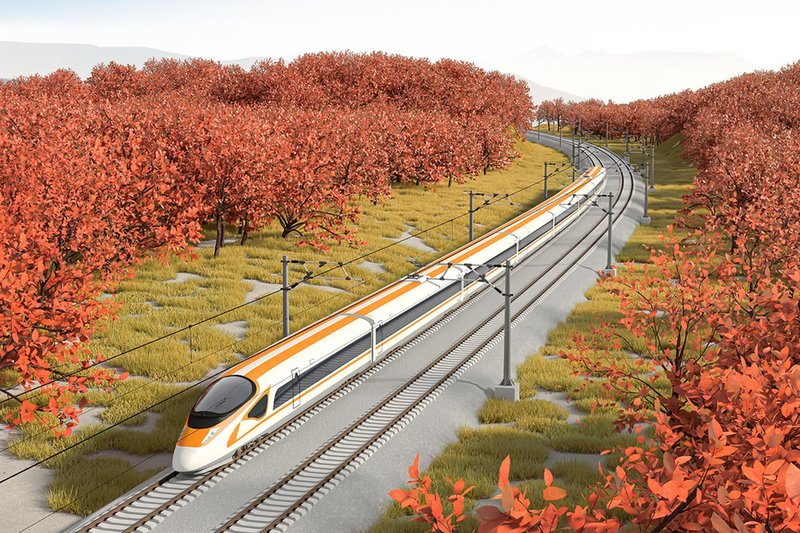
Credit:
High-speed railways combine both speed and efficiency. From the Shinkansen bullet train in Japan to the French TGV, high-speed trains have a history that spans several decades.
The evolution of high-speed rail has reshaped the transport landscape by offering an alternative to aviation, promoting economic growth, reducing travel times and offering a greener option.
Now, it is even becoming a competitor in price, with budget-high-speed rail options appearing in Europe. China, Japan, Germany, Italy, France, and Spain boast extensive high-speed rail networks, with trains that can reach speeds of over 300km/h.
Further expansion and improvement of high-speed rail will continue. There are several high-profile projects that seem inevitable, despite facing hurdles, including California high-speed rail, the complicated history of high-speed rail in Australia, and perhaps most famously, the ever-delayed HS2 project in the UK.
Yet despite some projects marred by setbacks, half of the ten most expensive rail projects that broke ground last year were high-speed rail projects. All five of these are located in Asia – a hotbed for high-speed rail, no small part due to China’s rapidly expanding network.
Additionally, new technological advancements, such as magnetic levitation (Maglev) trains, hold the promise of even faster speeds and smoother rides. The ongoing advances in high-speed rail infrastructure and technology suggest a promising future, where travel becomes even more convenient, sustainable and interconnected.
Given the rapid development over the last decade, here’s an updated rundown of the ten fastest high-speed trains currently in service in the world right now, by operational speed.
10. Trenitalia Frecciarossa 1000: 300km/h (Italy)
Italian state railway operator Trenitalia’s Frecciarossa, or ETR1000, was co-developed as a joint venture between Hitachi Rail Italy and Alstom.
The Frecciarossa, otherwise known as the red arrow, is also operating in Spain. Private high-speed rail operator Iryo uses 20 S 109 trainsets, which are derived from the ETR1000.
Reportedly developed in response to Italo, a private high-speed rail operator in Italy, the ETR1000 trainsets carry 457 passengers in eight-car non-articulated 200-metre trains, with an engineered maximum speed of 400km/h.
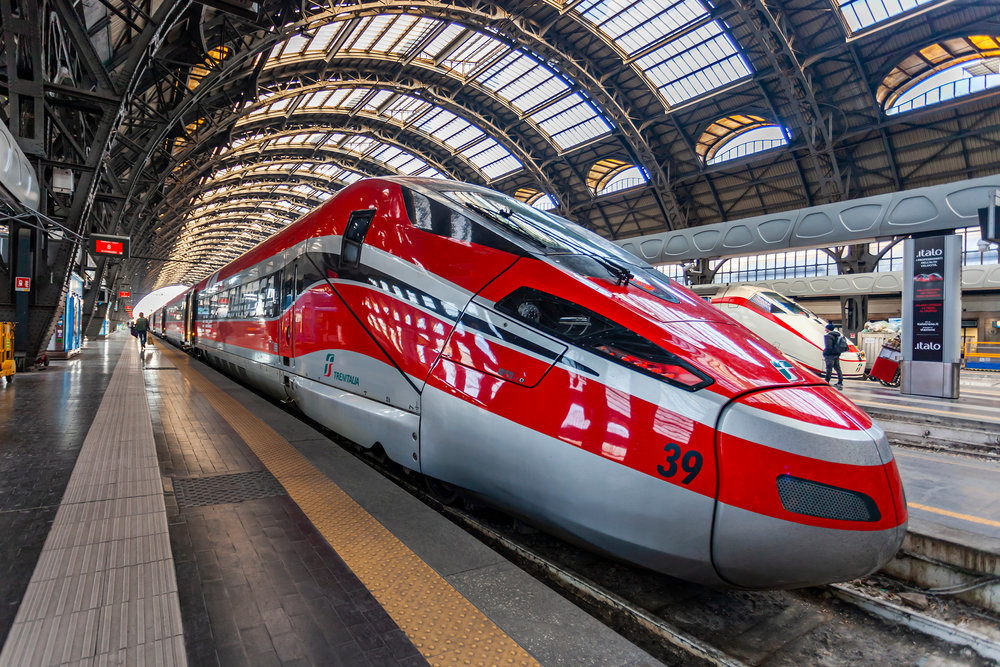
A Frecciarossa 1000 at Milan Centrale station. Credit: bellena/Shutterstock
In operation, the trains hit 300km/h but during testing in 2015 one of the ETR1000 sets reached 389km/h. 50 trainsets were built, but one is currently out of operation following the Livraga derailment.
On 6 February 2020, an ETR1000 operating the first service of the day was involved in a high-speed derailment at Livraga, on the Milan-Bologna high-speed line. The incident caused the death of the two train drivers and the injury of 31 people. It is the only railway accident to date on the Italian high-speed rail network.
9. Korail KTX-Sancheon: 305km/h (Korea)
South Korea’s national railway operator, Korail, runs the country’s high-speed rail service. Korea Train Express, more commonly known as KTX, began operation in 2004.
The network initially used rolling stock based that was partly built in Korea, based on Alstom’s TGV Réseau. Since then, the rolling stock on the line has shifted to fully domestically produced models, currently using the KTX-Sancheon built by Hyundai Rotem.
The KTX-Sancheon is named after the Korean name of the indigenous fish cherry salmon. It has a top operational speed of 305km/h and is the first high-speed train designed and developed in South Korea.
71 trainsets, which can accelerate from 0 to 300km/h in 316 seconds, currently carry up to 363 passengers each on the South Korean high-speed rail network.
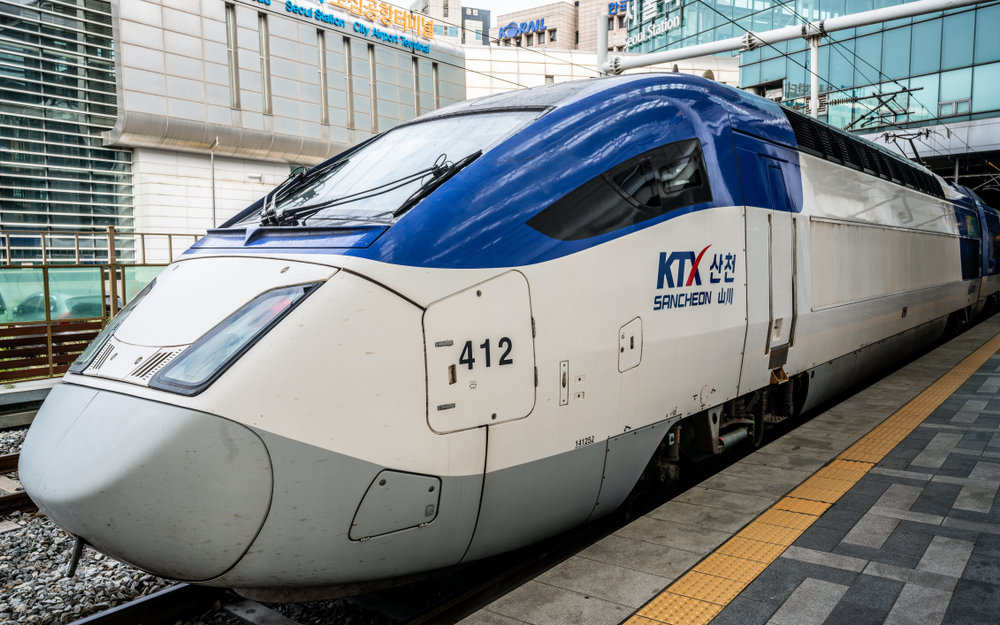
A KTX-Sancheon high-speed train at Seoul Station in South Korea. Credit: Keitma/Shutterstock
The new generation HEMU-430X prototype reached 421.4km/h in 2013, beating the previous Korean rail speed record of 352.4km/h set by a KTX-Sancheon HSR-350x train.
This means that South Korea is one of only four countries in the world to develop a train capable of running at over 420km/h, along with France, Japan and China.
Hyundai Rotem is currently manufacturing 16 sets of the latest commercial electrical multiple-unit model of the HEMU-430X, the EMU-320, expected to enter into service by the end of this year. In contrast to 316 seconds for the KTX-Sancheon, the EMU-320 can accelerate from 0 to 300km/h in 230 seconds and has a planned operation speed of 320km/h.
8. Renfe AVE 103: 310km/h (Spain)
The Renfe Class 103 is a high-speed train that Spanish state-run operator Renfe uses for its AVE high-speed service. The trains, also known as Series 103 or S103, are manufactured by Siemens as part of the Velaro family.
Spanish high-speed rail began operation in 1992 when the first line was opened, connecting the cities of Madrid, Córdoba and Seville.
Since then, the network has spread to connect the country’s major cities, as well as international connections. It has also opened up to open-access operators, creating an incredibly competitive high-speed rail market.
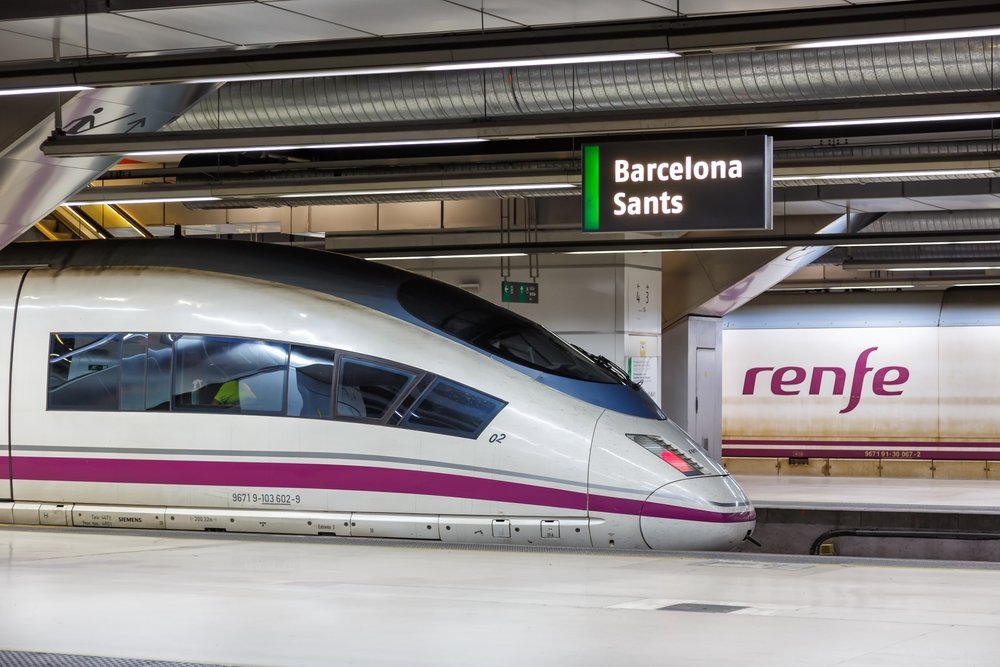
A Renfe AVE train at Barcelona Sants railway station in Barcelona, Spain. Credit: Markus Mainka/Shutterstock
26 trainsets run on the 621km Barcelona–Madrid high-speed railway, carrying up to 404 passengers at speeds up to 310 km/h. In 2006, an S103 achieved a record top speed of 403.7km/h, a Spanish record speed for rail vehicles.
Interestingly, the 8-car configuration that Renfe operates is actually two identical half-trains of four coaches. Each section has an independent power system, apart from the active pantograph and a high voltage line that runs along the length of the entire train.
The end coaches are split between the driver’s cab and passenger seating, with glass screens separating the two. This allows passengers the same views as the driver – but the driver can turn these opaque if preferred.
7. ONCF Al Boraq: 320km/h (Morocco)
The trains running on Africa’s first high-speed railway, Al Boraq in Morocco, come in at number seven on our list.
The line, operated by Moroccan national operator Office National des Chemins de Fer du Maroc (ONCF), runs between Casablanca and Tangier.
Al Boraq is comprised of two sections – a newly built dedicated high-speed line from Tangier to Kenitra and an upgraded existing line from Kenitra to Casablanca.

An Al-Boraq high-speed train at Casablanca Casa Voyageurs railway station, Morocco. Credit: CatwalkPhotos/Shutterstock
12 Alstom Avelia Euroduplex (otherwise known as TGV 2n2f) trainsets run at speeds as high as 320km/h on the 323km dedicated high-speed track.
Notably for a high-speed model, Euroduplex trains on the Al Boraq line are bi-level (double-decker), with a passenger capacity of 533. The trainsets are composed of two power cars and eight passenger cars.
The $2bn project cut journey times between Casablanca and Rabat in half, from almost five hours to just over two hours. During pre-service testing on the Al Boraq line, trains hit a peak of 357m/h – over twice the speed of the next fastest trains currently running in Africa.
6. JR Shinkansen: 320km/h (Japan)
Recognised the world over, the Shinkansen, colloquially known as the bullet train, is a Japanese star. But surprisingly, the original high-speed train doesn’t break into the top five.
Japan was the first country to develop a dedicated high-speed railway network, initially built to connect distant Japanese regions with the capital, Tokyo. Launching as the 515km Tokyo–Nagoya–Osaka Tokaido Shinkansen line in 1964, the network currently spans almost 3,000km of track.
The first Shinkansen trains to enter service in 1964, now classed as the 0 series, had a maximum operating speed was 220km/h. The current E5 and H5 Series, built by Hitachi Rail and Kawasaki Heavy Industries, hit a top operating speed of 320km/h.
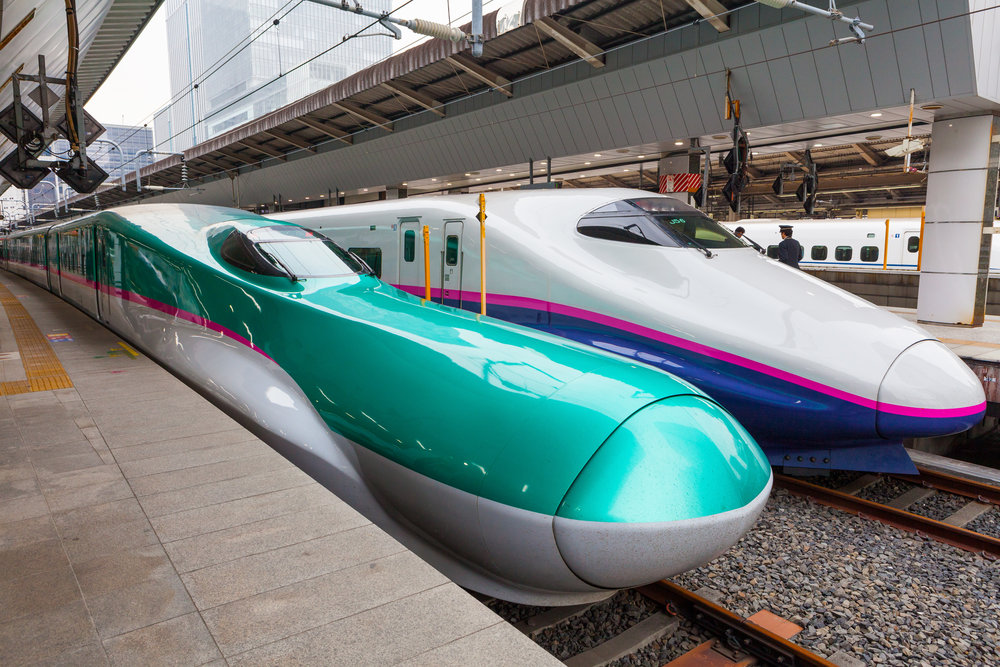
A green E5 series (L) and a white E2 series Shinkansen train (R) on the Tohoku Shinkansen line at Tokyo Station. Credit: Piti Sirisriro/Shutterstock
The E5 series runs on Tohoku Shinkansen and Hokkaido Shinkansen services, and the H5 is a cold-weather derivative of the E5 series that runs on the same lines. H5 units include several cold-weather features, including an upgraded snowplough, more durable rubber protection on the connections between cars and a stainless-steel underframe that protects the electronics from the elements.
Outside of everyday operation, the top speed a Shinkansen has recorded is 443km/h, recorded by the experimental Class 955 “300X” Tōkaidō Shinkansen during tests in 1996.
JR Central is developing an experimental Maglev Shinkansen, the L0 Series. Manufactured by Mitsubishi Heavy Industries and JR Central subsidiary Nippon Sharyo, the trains use the Japanese SCMaglev system.
JR Central plans to use the L0 series on the passenger services launching in 2027 on the Chūō Shinkansen railway line between Tokyo and Osaka. These trains are expected to operate at 500km/h but have hit a top speed during testing of a whopping 603km/h.
5. SCNCF TGV: 320km/h (France)
The Train à Grande Vitesse, or TGV, is iconic. Initially running on Europe’s first high-speed railway in France, the pioneer of high-speed rail in Europe has broken records for top speeds, repeatedly, since its inception.
In 1981, TGV Sud-Est trainset number 16 set a record speed of 380km/h. Just shy of a decade later in 1990, a modified TGV Atlantique 325 train recorded a new record speed of 515.3km/h. This record was smashed in 2007, when a Modified TGV POS, fitted with two powered bogies similar to the AGV prototype, hit 574.8kh/h, the current world record.
Manufactured by Alstom and operated by French operator SNCF in the main, in everyday operation the TGV Duplex, Réseau, POS and Euroduplex models run at a top track speed of 320km/h in France.
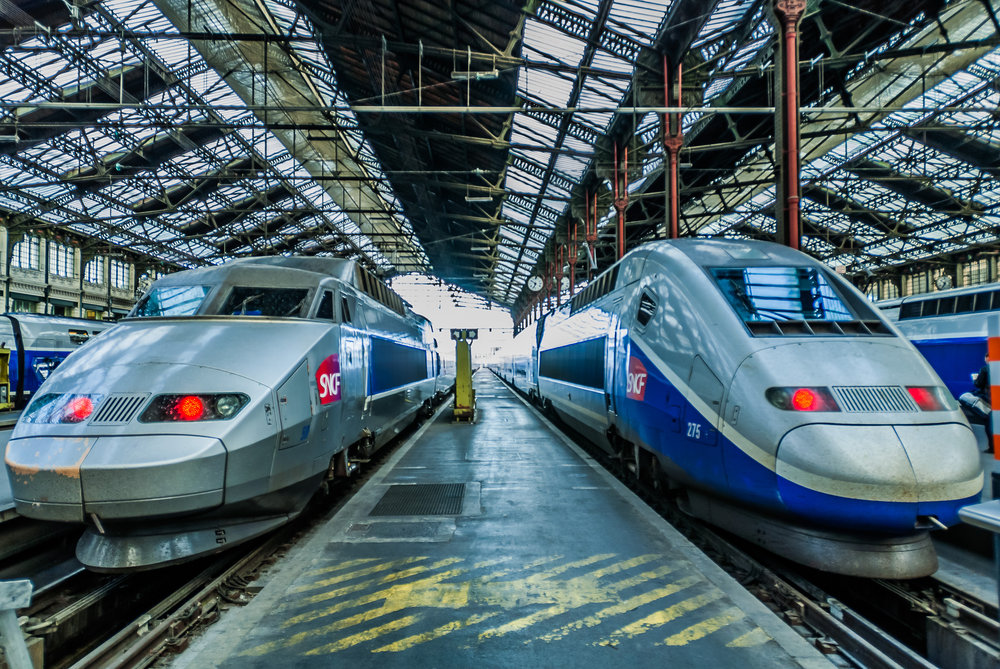
A TGV Atlantique (L) and a TGV Duplex (R) at Gare de Lyon railway station in Paris, France. Credit: Franck Camhi/Shutterstock
The SNCF TGV Network extends outside France, directly linking to Italy, Spain, Belgium, Luxembourg and Germany. Open-access operators also link France to other countries using TGV trainsets.
TGV Lyria runs to Switzerland and Thalys/Eurostar to the UK, Netherlands, Germany and Belgium. Further afield, TGV trainsets operate in the US, Spain, Italy, Morocco, China and South Korea,
The newest model of TGV, TGV-M, was unveiled in 2021. In July 2018, SNCF placed a €2.7bn order for 100 TGV-M trainsets, then referred to as the Avelia Horizon. With a proposed maximum capability of 350km/h, the TGV-M is expected to enter service with SNCF in 2024.
4. DB ICE: 350km/h (Germany)
The ICE 3, or Intercity-Express 3, is a family of high-speed electric multiple-unit trains manufactured by Siemens and Bombardier. The ICE 3 is operated mainly by Deutsche Bahn (DB), but also by Dutch Railway operator Nederlandse Spoorwegen (NS).
The flagship of high-speed rail in Germany, the family includes classes 403, 406, 407 and 408, which are known as ICE 3, ICE 3M, New ICE 3 and ICE 3neo respectively.
Three multisystem trains, known as ICE International, are in use in the Netherlands. ICE 3 trainsets also operate on cross-border routes to the Netherlands, Belgium and France
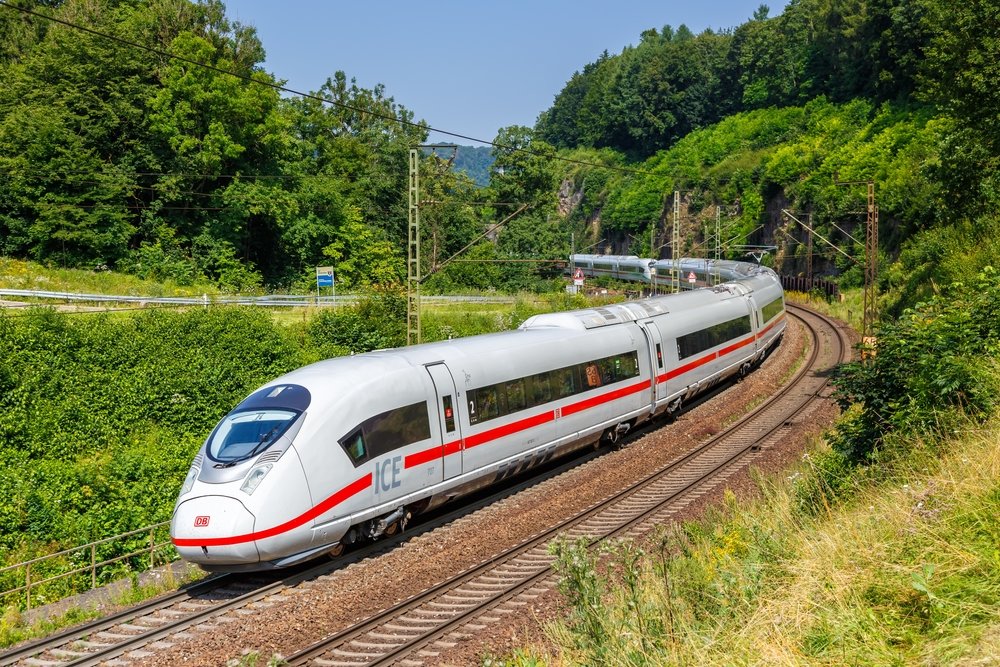
A Deutsche Bahn ICE 3 high-speed train on the Geislinger Steige near Amstetten, Germany. Credit: Markus Mainka/Shutterstock
ICE 3 trains operate at the national maximum high-speed railways track speed of 320km/h in Germany, but have pipped their competition in this list due to the fact that the class 403 is authorised to run at speeds of 330km/h on the high-speed line between Frankfurt and Cologne to overcome delays. The ICE 3 Classes 403 and 406 hit top speeds of 368km/h on trial runs.
The ICE 3M/F was the inspiration for Siemens’ Velaro trainsets, which are used in Germany, Belgium, France, the UK, the Netherlands, Spain, China, Russia and Turkey. Egyptian National Railways has also ordered 41 eight-car ICE trainsets.
3. CR Fuxing: 350km/h (China)
The China Railway (CR) Fuxing, also known as the CR series EMU, is a series of high-speed trains. Developed by China Railway Corporation, Fuxing trains operate at 350km/h but have been run as high as 420km/h in tests.
The Fuxing models are the first completely domestically produced high-speed models in China, without any proprietary or licensed technology from external rolling stock manufacturers.
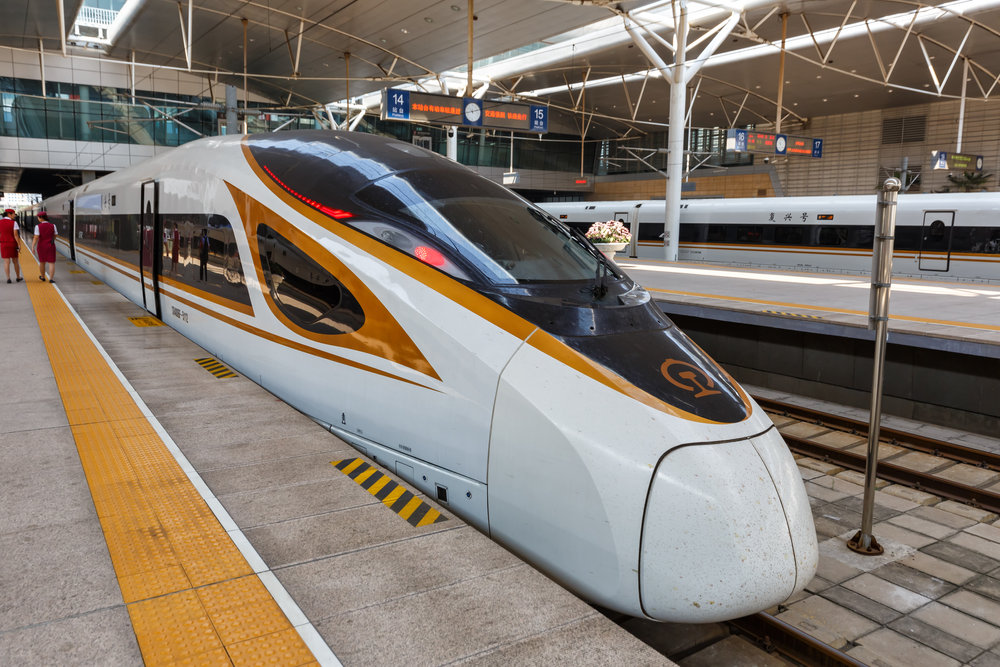
A Fuxing high-speed train at Tianjin railway station in Tianjin, China. Credit: Markus Mainka/Shutterstock
An 8-car Fuxing set is 209m long, 3.36m wide and 4.06m high and can carry over 500 passengers. Perhaps best known for their use on the Beijing–Shanghai high-speed railway, which carries passengers between the two cities in just shy of 5 hours, Fuxing sets are also used on seven other lines in China.
In fact, the new high-speed connection to Tibet uses a modified Fuxing model designed to operate at high altitudes. The Fuxing CR400AF will be the first model to operate abroad, with 11 trainsets ordered for the Jakarta-Bandung high-speed railway in Indonesia, due to start running this year.
2. CR Harmony: 350km/h (China)
The China Railway (CR) Hexie, also known as the Harmony, is an umbrella term for the CRH series EMU high-speed trains. Although they operate at the same speed as the Fuxing trains, with a top operating speed of 350km/h, we have them in second place due to their higher record speeds in testing.
The CR Harmony was originally built using existing technology from global rolling stock manufacturers, with CR aiming to eventually build up its own knowledge of the technology. This plan came to fruition with the domestic development of the CR Fuxing trains.
The CRH380B is based on the Siemens Velaro family of high-speed trains and has been in service on the Shanghai–Hangzhou High-Speed Railway and Shanghai–Nanjing High-Speed Railway since 2011.

A CR Hexie “Harmony” train at the Hohhot East Railway Station in Hohhot, China. Credit: Zhe Ji/Getty Images
The CRH380A has the second-highest recorded speed of the Harmony trains, clocking 486.1km/h during a test run in 2010. Controversially, although it was not produced under a technology transfer agreement, there are accusations that the CRH380A is based on unlicensed Japanese Shinkansen technology.
Another notable Harmony model is the CRH380D, derived from the Bombardier Zefiro 380. With a record test speed of 483km/h, the highest speed ever recorded by a conventional unmodified high-speed train, there are 85 trainsets currently in operation in China, split across the Shanghai Railway and Chengdu Railway.
1. Shanghai Maglev: 460km/h (China)
The Shanghai Maglev, also known as the Shanghai Transrapid, tops the list with its maximum operating speed of 460km/h and average speed of 251km/h. It has a record high-speed of a staggering 501km/h.
The maglev train isn’t a conventional high-speed model. Instead, it utilizes electromagnetic force to levitate above the track, eliminating friction and allowing for incredibly smooth and quiet travel.
The Shanghai Maglev Transportation Development Company owns and operates the Shanghai Maglev. Siemens and German multinational ThyssenKrupp constructed the train as a joint venture.

The Shanghai Maglev train is the fastest passenger train in operation in the world – for now
The service started commercial operations in April 2004 and runs on the 30.5km Shanghai Maglev Line. This is the first commercially operated high-speed magnetic levitation line, running from Longyang Road Station in Shanghai, China to Shanghai Pudong International Airport, the route is the first commercially operated high-speed magnetic levitation line.
The maglev train can cover the approximately 19-mile distance in just under eight minutes, still making it an incredibly efficient connection to the airport, despite the fact that it doesn’t terminate in the city centre.